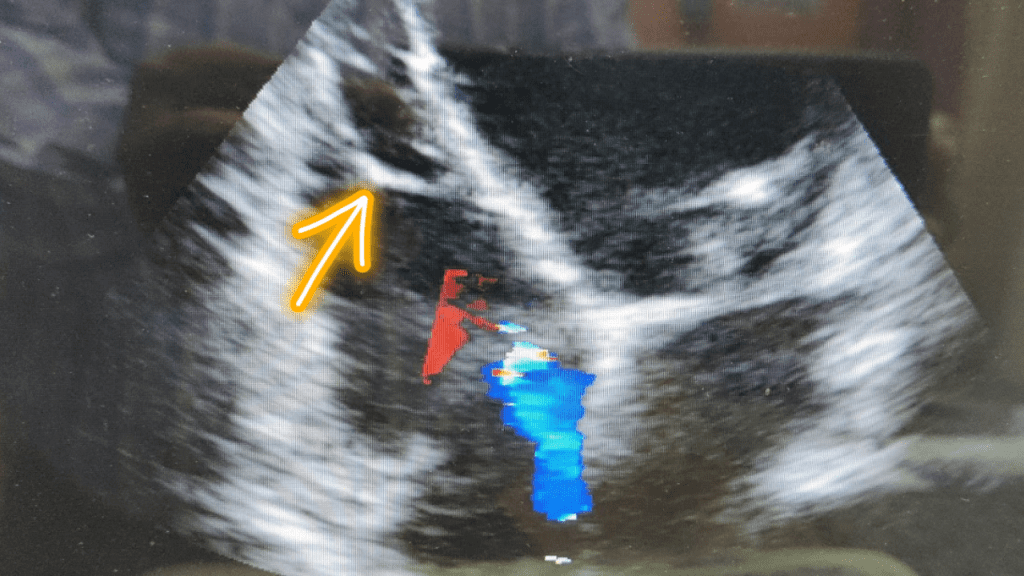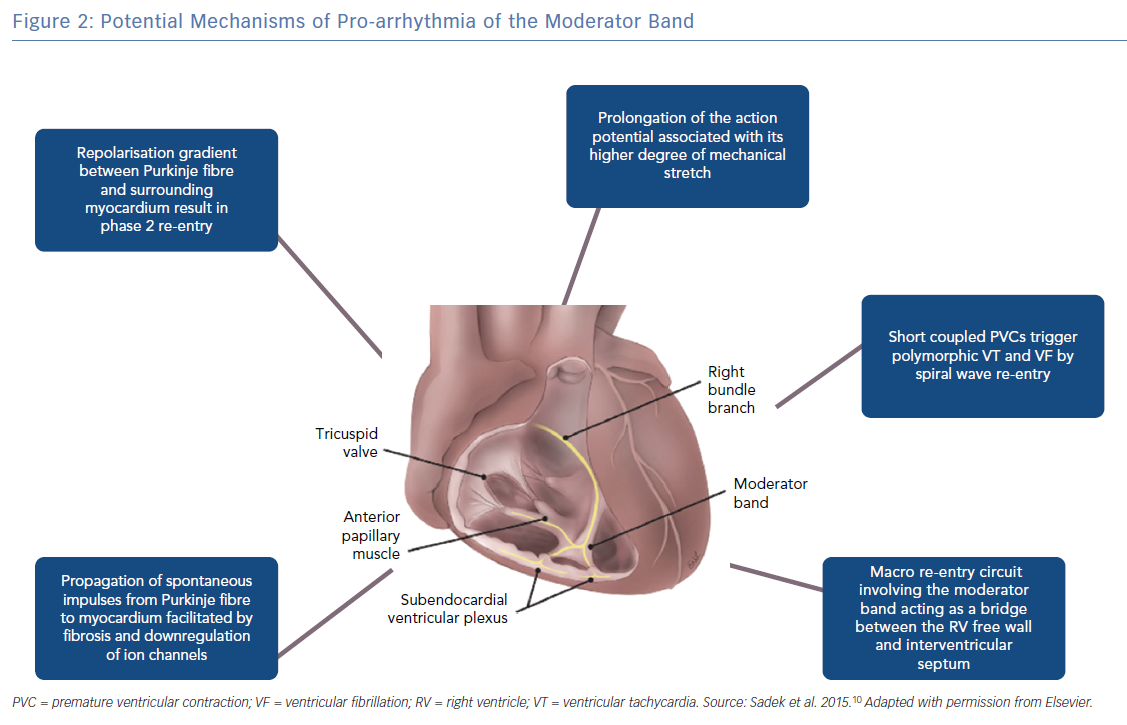Image Question-30
What is the Arrow marked structure in Echocardiogram Image ?

What is the Arrow marked structure in Echocardiogram Image ?
A. Coumadin ridge
B. Moderator Band
C. Chiari network
D. Papillary Muscle
- The moderator band is an important anatomic landmark that is used to characterize the morphologic RV in congenital heart diseases.
- Provides support to the anterolateral papillary muscle.
- Guides blood from the RV inflow tract to the outflow tract
- Prevents RV overdistention, especially in cases of RV infarction.
- Moderator band contains the right bundle branch
Moderator Band is part of the septo-marginal trabeculation that provides support to the anterior papillary muscle of the tricuspid valve
Moderator Band carries within it a fascicle of the right bundle that allows for rapid activation of the RV free wall
Transection of the Moderator Band – results in a distal right bundle branch block pattern.
Morphology of the Moderator Band is – short and thick is the commonest variant. It can be also long narrow bands.
Moderator Band – Important collateral circulation between the left and right coronary arteries
Vascular supply to the Moderator Band – originates from the anterior interventricular branch of the left coronary artery with anastomotic contribution from the right coronary artery at the base of the RV anterior papillary muscle, which forms an important collateral circulation between the left and right coronary arteries
Arrhythmias related to Moderator Band

Source:
Arrhythmias from the Right Ventricular Moderator Band: Diagnosis and Management
Megan Barber
Jason Chinitz
Roy John
- Premature ventricular contractions (PVC)
- Repetitive ventricular tachycardia.
- Stretch-related arrhythmia
- Atrioventricular reciprocating tachycardias
Atrioventricular reciprocating tachycardias – Mahaim accessory pathway
More benign arrhythmia related to the MB is via atrio-fascicular accessory pathways that are known to insert into the Purkinje system of the MB making it part of atrioventricular reciprocating tachycardias in patients with the Mahaim accessory pathway





